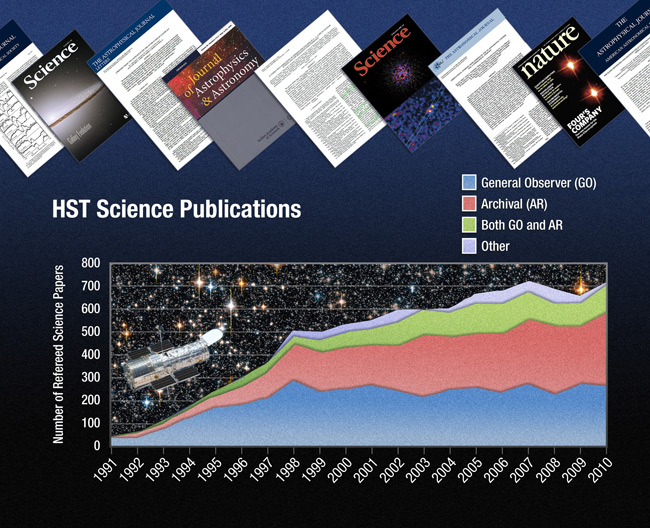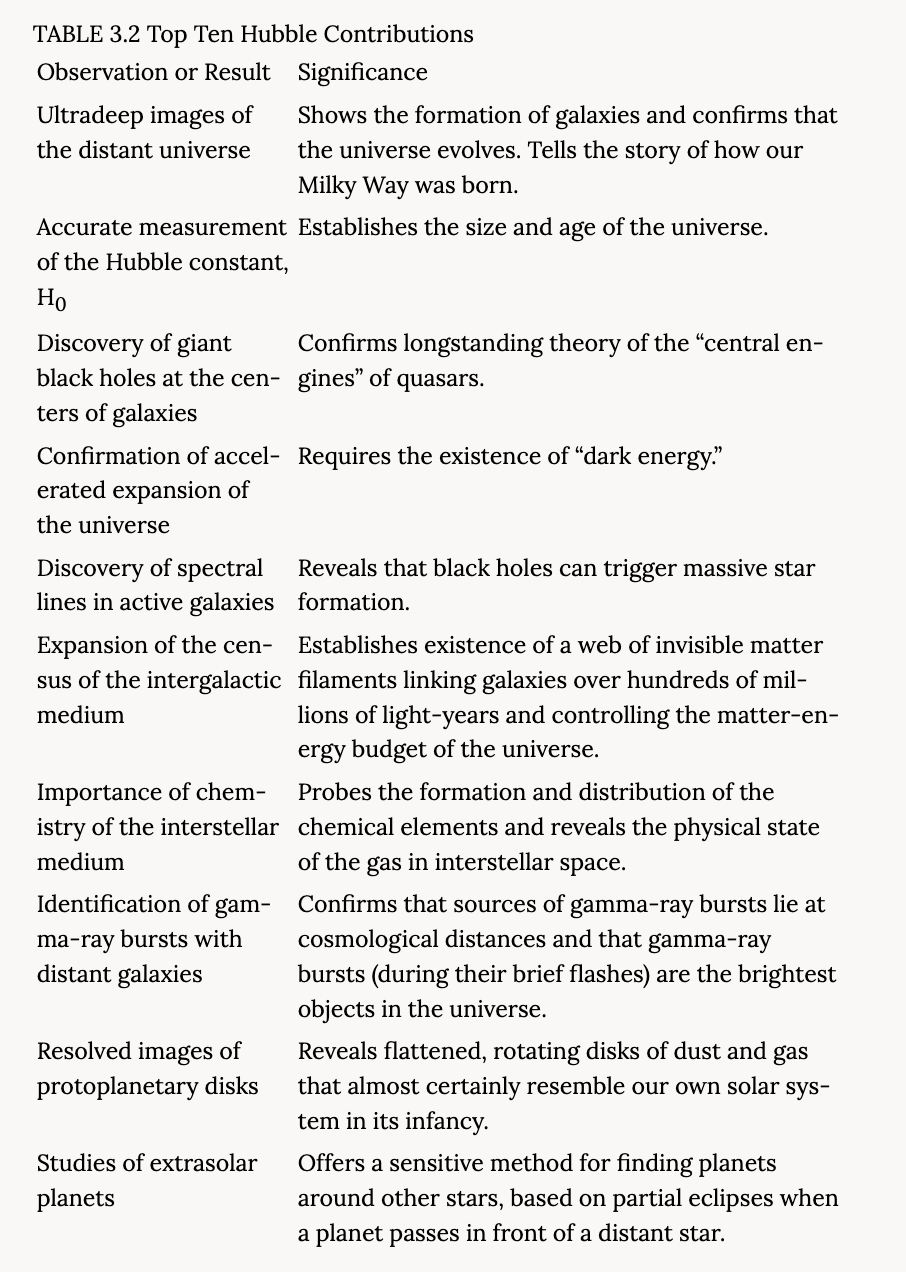Hubble Telescope: Viewing the Final Frontier
Short Term Impact
Curtis Struck, 2023, Iowa State University, Personal Interview.
Scientists across the world collaborate using Hubble data to make new discoveries. In 1996, Curtis Struck, Iowa State University astronomy professor, discovered supersonic "comet-cloud" formations.
"Every current astronomy textbook includes contributions from the observatory. Today's college undergraduates have not known a time in their lives when astronomers were not actively making discoveries with Hubble data."
-Brian Dunbar, NASA
The Hubble telescope provides enormous amounts of data that fuels research. Due to Hubble’s data, scientists are learning the age of the universe and how galaxies are formed.

Impact on Research, 2011, NASA.
“During its 30 years in space, Hubble has brought the universe down to Earth for all of humankind to explore. Hubble excites the imagination, inspires the soul, and teaches us that there is still much to learn about our place in the cosmos.”
-Ken Sembach, Space Telescope Science Institute Director
Additionally, Hubble made larger contributions to science. The Hubble successfully answers deeper scientific and more complicated scientific questions.

Hubble Contributions, 2005, National Academies of Sciences, Engineering, and Medicine.
"The impact of the Hubble Telescope included science advancements but it also had a social impact. Whether you're a scientist or not...the images caused people
to think and be curious about the universe. Scientifically it has helped solve the debate
of the age of our universe and was the first instrument to observe the atmosphere of other
planets, enabling us to measure supernovas, and measure molecules in other galaxies."
-Dr. Jack Gable, Astrophysicist, Creighton University
Legacy